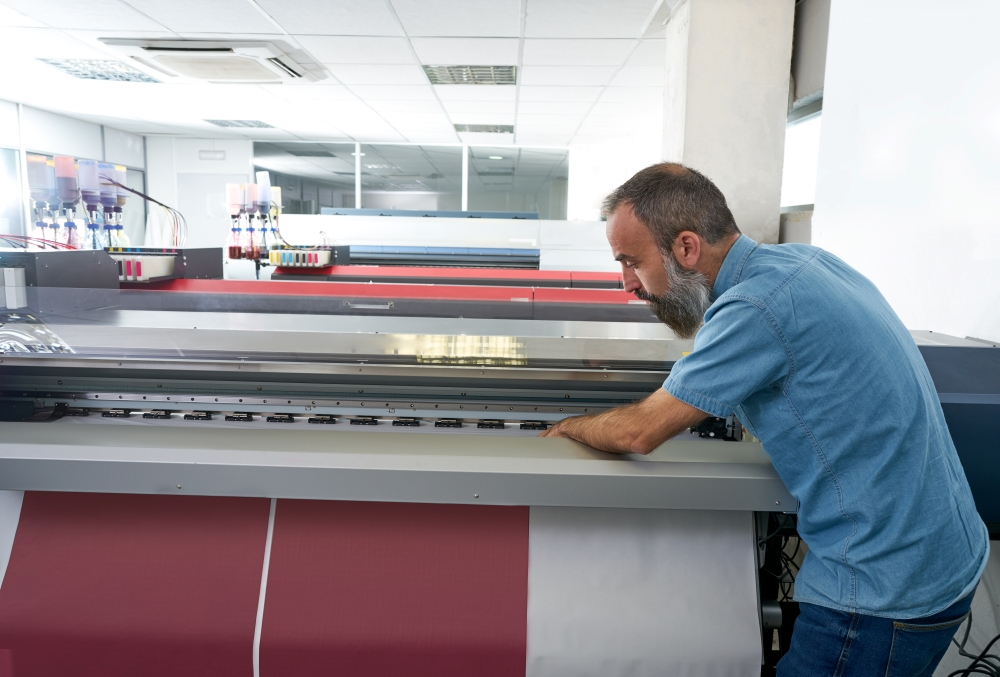Choosing the right printer can give office managers and business owners some trouble. Is it better to buy a wide format printer or use a traditional printer? Do colors even matter in every industry, or is it worth saving a few bucks with black-and-white printing?
Printing in a wider format might seem like a waste of time to someone who hasn’t used anything but a standard office printer. However, there are more than a few reasons for this format’s use in some of the biggest industries.
But what’s the most significant reason? It’s all about the detail and what you can do with it.
Wide Format Printer Uses in Marketing and Advertising
The marketing industry revolves around creating attention-grabbing content and media to raise brand and product awareness. But where does a wide format printer fit in?
These printers enable marketers to create large ad banners and colorful high-resolution posters. They can boost a brand’s visibility in the real world. And despite what many choose to believe, traditional advertising isn’t dead because of digital marketing’s popularity.
Some brands need to stand out in both the digital and physical space. Retail stores, service providers, and even large enterprises do plenty of advertising in brick-and-mortar locations.
Using a wide format medium like paper, canvas, vinyl, and various other materials can grab more attention than a small A4 paper poster any color printer can whip out. People are easily distracted in today’s rapid-paced environment.
That’s why sometimes going bigger with ads and other marketing materials is necessary to get people’s attention and make your message clear.
Common Uses in Marketing
Companies that want to create traditional marketing materials have more opportunities when using a wide format printer.
For example, retail stores rely on attention-grabbing graphics that far exceed those of standard document papers.
Most retail graphics and wall decals are too large for a small printer to handle. Not to mention that attaching multiple posters together won’t have the same effect on customers and clients. But a high-resolution poster or sign in a wide or large format can attract attention toward purchase points, special discounts, product launches, etc.
The entertainment industry is all about massive banners and posters designed to draw attention to various events.
- Movie premiers
- Standup shows
- Concerts
- Live tapings
- Theater plays
These are just a few examples.
It’s also common to see photographers and wedding planners advertise their services through larger canvas prints of anniversary pictures or wedding photos. That’s because people are curious to see the end product displayed in various formats.
More prominent signs draw more attention than smaller ones. And given the many distractions in the digital and physical domains, wide format printing can help brands, businesses, and even charity organizations draw attention.
Wide Format Printer Uses in Construction
Anyone working in the construction industry can benefit from a wide format printer in the office. Whether it’s the bricklayers, contractors, electrical engineers, or interior designers, who need them, large documents offer more details.
A wide format printer can create very clear blueprints. Why are those important? It makes it easier to spot inconsistencies in schematics, wiring plans, plumbing plans, home or office designs, and other building plans.
High-quality images clarify the tiniest details and reduce the risk of making mistakes on the job site.
A standard piece of paper just won’t cut it for a construction company, electrical repairs firm, and other businesses operating in this industry.
Color Wide Format Printing Makes Things Even Better
Although wide format printing has many uses in various industries, its use in construction is perhaps even more vital.
Blueprints, plans, and schematics are documents that enable different teams to communicate and collaborate on projects. If the communication is poor, teams can encounter challenges, make mistakes, or cause one another to drop the ball.
Wide format printing is only the first step in improving communication in the construction industry. Fortunately, wide format printers have evolved beyond their black-and-white limitations. Color printing is quickly becoming the highest industry standard.
Adding color to an already enlarged schematic or floor plan can offer even more clarity to every team involved in a project. Separating plumbing, electrical, HVAC, and other aspects of the building plan is easier.
And the easier it is to understand a plan and retain the information in it, the less likely it is to encounter human errors. Fewer mistakes lead to less resource waste and more cost-efficient construction projects.
In addition, the less time people spend fixing mistakes, the quicker things get done. This means contractors and other specialists can complete their projects on time. It makes investors, contractors, landlords, and everyone else happy.
The communication, coordination, and budgeting improvements from wide format printing in color are precious in the construction industry. A wide format printer is the type of office printer that can save significant money in labor and material costs.
Improve Your Printing Versatility
If printing didn’t offer any advantages, it wouldn’t be around today. Yet many businesses and industries rely on high-quality print to reach customers, communicate, and improve operating costs.
With that in mind, why stick to a single print style if you can access something better? A wide format printer can be a valuable piece of office equipment. It can expand your company’s marketing and communication channels, create new opportunities, and enhance visibility. Why wouldn’t real-world prints follow the same example if digital graphics are all about detail, high resolution, and clarity?
When you’re ready to complement your office equipment with new technology, contact Modern Office Methods. We cater to Cincinnati, Columbus, Dayton, and Mansfield businesses and offer a wide range of products and services.


Leave A Comment
You must be logged in to post a comment.